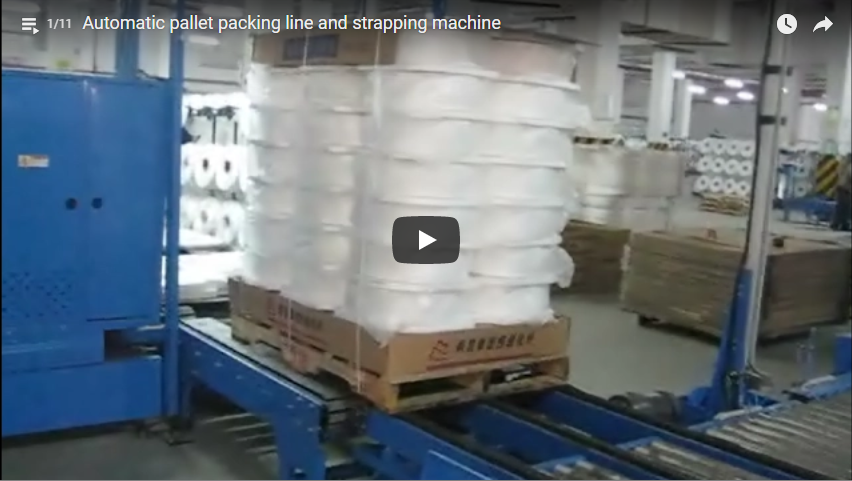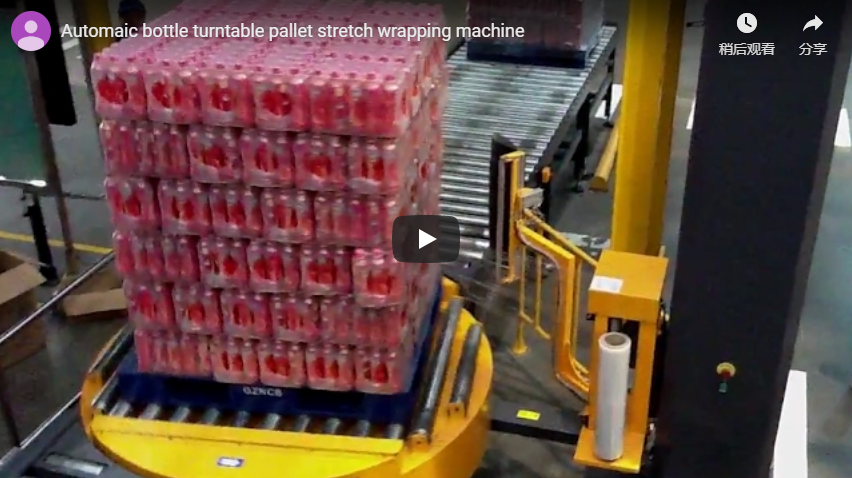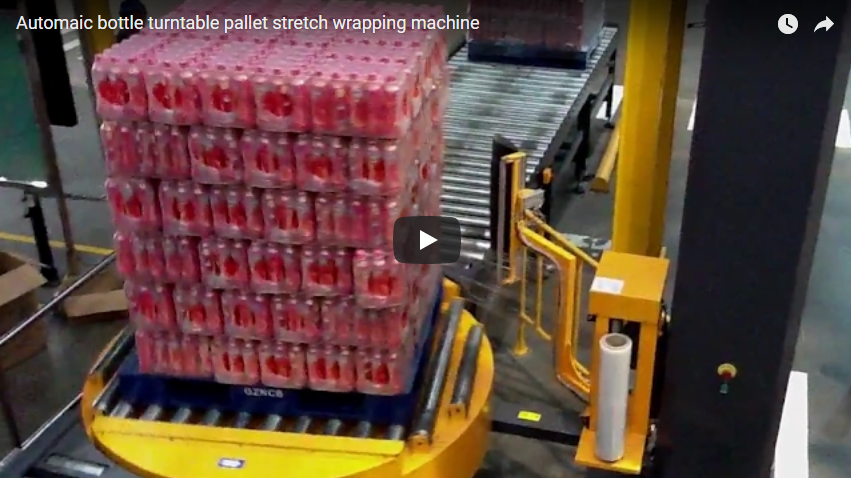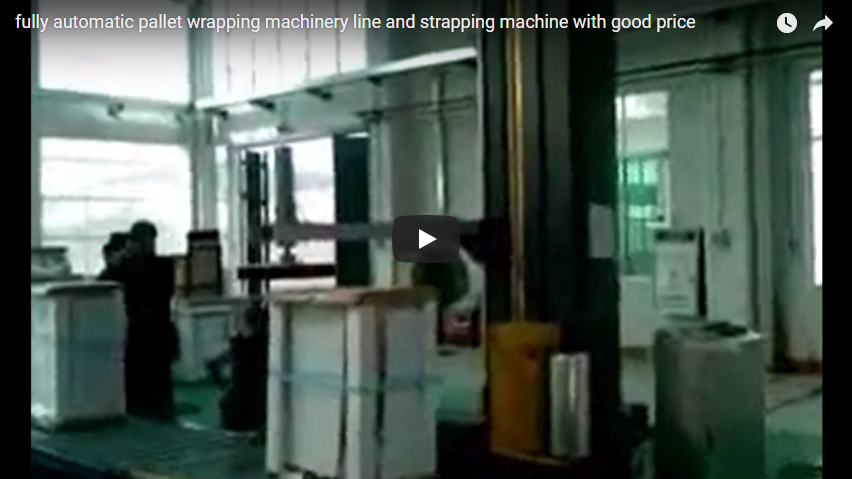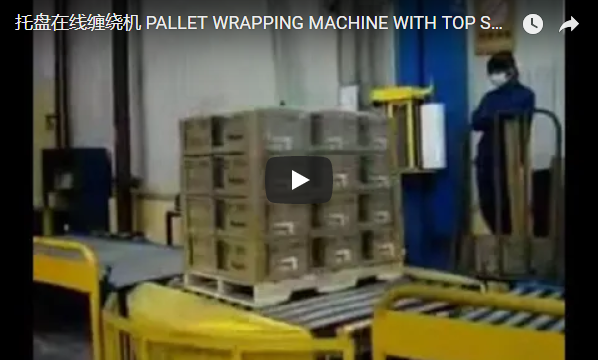Online Pallet Wrapper with Top Press: Enhancing Load Stability and Throughput
In today's demanding warehouse and manufacturing environments, efficiently securing palletized goods for transit is paramount. An online pallet wrapper with top press represents a significant advancement in automated packaging technology, designed specifically for integration into conveyor lines to maximize throughput while ensuring superior load containment, particularly for unstable or lightweight loads. This type of automated stretch wrapping system combines the speed of inline wrapping with the added security of a top platen.
1. Operational Principles: How It Works
Integrated directly into a packaging line, the online pallet wrapper automatically receives pallets via powered conveyors. The typical wrapping cycle proceeds as follows:
- Pallet Entry: The pallet moves onto the wrapping station conveyor section.
- Load Sensing: Sensors detect the presence and height of the palletized load.
- Top Press Activation: The top press (platen) lowers to apply controlled downward pressure onto the top of the load, stabilizing it before and during the wrapping cycle.
- Film Attachment & Wrapping: The stretch film is automatically clamped, cut, and wiped onto the load. The wrapping sequence begins – either the load rotates on a turntable integrated with the conveyor, or a rotary arm/ring carrying the film carriage orbits the stationary load. The film carriage moves vertically to cover the entire height of the load according to pre-programmed parameters.
- Film Cut & Seal: Upon cycle completion, the film is automatically cut and sealed (often using a heat sealer or wipe-down brush) to the pallet load.
- Top Press Retraction: The top press retracts.
- Pallet Exit: The securely wrapped pallet is automatically conveyed off the wrapping station to the next stage (e.g., labeling, staging area).
2. Key Design Features and Components
Understanding the core components highlights the machine's capabilities:
- Integrated Conveyor System: Typically features powered roller or chain conveyors for seamless pallet transfer into and out of the wrapping zone.
- Stretch Film Carriage: Houses the film roll and incorporates a powered pre-stretch mechanism. This critical feature elongates the film before application (often achieving 200-300% stretch), maximizing film yield and enhancing load holding force.
- Top Press (Top Platen): A pneumatically or electrically actuated platen designed to apply adjustable, consistent downward pressure. Essential for preventing lightweight or irregularly stacked items from shifting during the wrapping process.
- Rotary Arm / Turntable Assembly: The mechanism responsible for the relative motion between the pallet and the film carriage. Online systems often utilize rotary arms or rings for higher throughput as the pallet doesn't need to start/stop rotation inertia, though integrated turntable designs exist.
- Control System (PLC & HMI): A Programmable Logic Controller (PLC) manages the machine's operations, while a Human-Machine Interface (HMI), usually a touchscreen panel, allows operators to select wrap programs, adjust parameters (wrap counts, tension, top press pressure, speeds), and monitor machine status/diagnostics.
- Safety Systems: Conforms to industry safety standards, typically including perimeter fencing, access doors with interlocks, light curtains at entry/exit points, and emergency stop buttons.
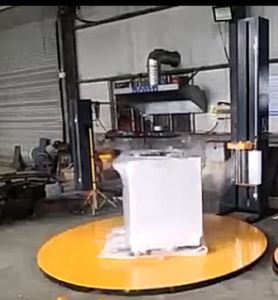
big pallet wrap 3. Technical Specifications: A Comparative Overview
While specifications vary significantly between models and manufacturers, typical ranges for online pallet wrappers with top press include:
- Maximum Load Size (L x W x H): Varies widely, e.g., 1200mm x 1200mm x 2200mm (48" x 48" x 87").
- Maximum Load Weight: Typically ranges from 1500 kg (3300 lbs) to 2500 kg (5500 lbs).
- Rotational Speed: Up to 15-25 RPM for turntables; rotary arms can often achieve higher effective speeds.
- Film Carriage Vertical Speed: Adjustable, synchronised with rotation for consistent film overlap.
- Film Pre-stretch Ratio: Electronically adjustable, often up to 250% or 300%, optimizing film usage.
- Top Press Pressure: Adjustable, tailored to load stability requirements without causing product damage.
- Power Requirements: Typically 480V/3Ph/60Hz or 380V/3Ph/50Hz, depending on region.
- Pneumatic Requirements: Clean, dry compressed air (e.g., 6 bar / 90 PSI) often required for clamps, top press, and cutters.
- Throughput Capacity: Can range from 30 to over 100 pallets per hour, depending on load height, wrap pattern complexity, and conveyor speeds.
4. The Critical Role of the Top Press
The inclusion of a top press is the defining feature differentiating this machine class. Its necessity arises in specific scenarios:
- Lightweight Loads: Prevents boxes or items on the top layers from being displaced by the tension of the stretch film during wrapping.
- Unstable or Irregular Loads: Provides temporary stability to stacks that might otherwise shift or topple during rotation or wrapping arm movement.
- Tall Loads: Helps maintain vertical alignment throughout the wrapping cycle.
- Ensuring Consistent Containment: By preventing top-layer movement, it ensures the film applies consistent containment force from top to bottom.
The ability to adjust the pressure applied is crucial; too little won't stabilize, while too much could damage the product or packaging.
5. Advantages in Modern Operations
Integrating an online pallet wrapper with a top press offers substantial benefits:
- Enhanced Load Stability & Reduced Damage: The primary benefit. Secure wrapping combined with top stabilization significantly cuts down on goods damaged during handling and shipping, directly impacting the bottom line.
- Increased Throughput & Efficiency: Automation eliminates manual wrapping bottlenecks. Inline operation allows for continuous flow, dramatically increasing the number of pallets processed per hour compared to manual or semi-automatic methods. Labor can be reallocated to more value-added tasks.
- Optimized Material Usage: Powered pre-stretch systems use significantly less film per pallet compared to manual wrapping, leading to material cost savings and reduced environmental impact. Consistent, machine-controlled application ensures optimal film usage every time.
- Improved Operator Safety: Automating the wrapping process removes the need for manual handling and movement around rotating loads, reducing risks of ergonomic injuries and accidents.
- Process Consistency & Quality Control: Delivers repeatable, pre-programmed wrap patterns, ensuring every pallet meets defined security standards, crucial for customer satisfaction and supply chain integrity.
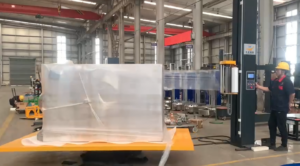
large turntable pallet wrapping machine 6. User Experience & Integration Considerations
From a user perspective, modern systems prioritize ease of use:
- Intuitive Controls: Touchscreen HMIs offer graphical interfaces for easy program selection, parameter adjustment, and troubleshooting.
- Maintenance: Designed for reliability, but routine maintenance (lubrication, sensor checks, wear part inspection like cutter blades) is essential for uptime. Access points are typically designed for ease of service.
- Integration: Successful implementation requires careful planning of the conveyor layout, ensuring proper communication (handshakes) between the wrapper and upstream/downstream equipment (e.g., palletizers, labelers).
- Film Compatibility: Choosing the right type and gauge of stretch film is vital for performance and cost-effectiveness. The machine's pre-stretch capabilities should match the film properties.
Conclusion
The online pallet wrapper with top press is more than just a packaging machine; it's a strategic investment for facilities needing high-volume, secure pallet wrapping, especially for challenging loads. By combining automated efficiency, advanced film optimization, and the crucial element of top-load stabilization, this equipment directly contributes to reduced product damage, lower labor costs, increased throughput, and enhanced overall operational effectiveness in demanding logistics and manufacturing environments.
For a broader overview of stretch wrapping technologies and solutions:
https://www.fhopepack.com/Stretch_wrapping_machine.html


